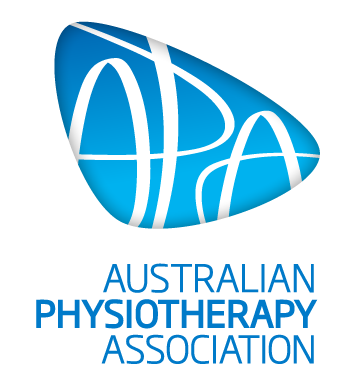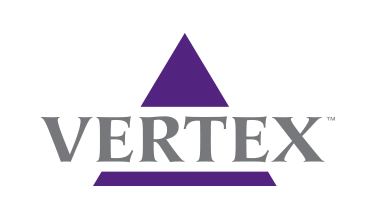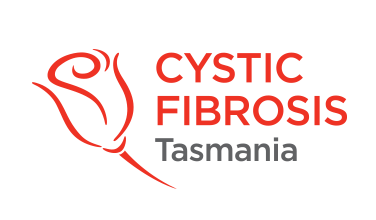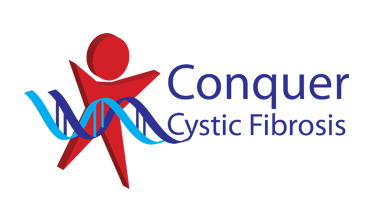Musculoskeletal Considerations
LESSON 1: EXERCISE AND PHYSICAL ACTIVITY IN CF
Button B, Wilson C, Dentice R, Cox N, Middleton A, Tannenbaum E, Bishop J, Cobb R, Burton K, Wood M, Moran F, Black R, Bowen S, Day R, Depiazzi J, Doiron K, Doumit M, Dwyer T, Elliot A, Fuller L, Hall K,
Hutchins M, Kerr M, Lee A, Mans C, O’Connor L,Steward R, Potter A, Rasekaba T, Scoones R, Tarrant B, Ward N, West S, White D,Wilson L, Wood J, and Holland A. Physiotherapy for cystic fibrosis in Australia and New Zealand: A clinical practice guideline. Respirology 2016;21:656–667
Garber C, Blissmer B, Deschenes M, Franklin B, Lamonte M, Lee I, Nieman D, Swain D. Quantity and quality of exercise for developing and maintaining cardiorespiratory, musculoskeletal, and neuromotor fitness in apparently healthy adults: guidance for prescribing exercise. Medicine and Science in Sports and Exercise. 2011;43:1334-1359
Hebestreit H, Schmid K, Kieser S, et al. Quality of life is associated with physical activity and fitness in cystic fibrosis. BMC Pulm Med. 2014; 14:26.
Hulzebos H, Jeneson J, van der Ent C, Takken T. CrossTalk opposing view: Skeletal muscle oxidative capacity is not altered in cystic fibrosis patients. J Physiol 2017;595:1427-1428
Klijn PH1,van der Net J,Kimpen JL,Helders PJ,van der Ent CK. Longitudinal determinants of peak aerobic performance in children with cystic fibrosis. Chest.2003 Dec;124(6):2215-9
Nixon PA, Orenstein DM, Kelsey SF, Doershuk CF. The prognostic value of exercise testing in patients with cystic fibrosis. N Engl J Med. 1992;327(25):1785-8.
Perez M, Groeneveld I, Santana-Sosa E, Fiuza-Luces C, Gonzales-Saiz L, Villa-Asensi J, Lopez-Mojares L, Rubio M, Lucia A. Aerobic fitness is associated with lower risk of hospitalisation in children with cystic fibrosis. Ped Pulm.2014;49:641-649
Pianosi P, Leblanc J, Almudevar A. Peak oxygen uptake and mortality in children with cystic fibrosis. Thorax. 2005;60(1):50-4.
Rodriguez-Miguelez P, Erickson M, McCully K, Harris R. CrossTalk proposal: Skeletal muscle oxidative capacity is altered in patients with cystic fibrosis. J Physiol 2017;595:1423-1425
Swisher A, Hebestreit H, Meija-Downs A, Lowman J, Gruber W, Nippins M, Alison J, Schneiderman J. Exercise and habitual physical activity for people with cystic fibrosis: expert consensus, evidence-based guide for advising patients. Cardiopulm Phys Ther J.2015;26:85-98.
LESSON 2: Exercise and airway clearance
Baldwin D, Hill A, Peckham D, Knox A. Effect of addition of exercise to chest physiotherapy on sputum expectoration and lung function in adults with cystic fibrosis. Respiratory Medicine 1994, 88: 49-53.
Balestri E, Ambroni M, Dall’Ara S, Miano A. Efficacy of physical exercise for mucus clearance in patients with cystic fibrosis (CF). Pediatric Pulmonology 2004, 38(S27): 316.
Bilton D, Dodd M, Abbott J, Webb A. The benefits of exercise combined with physiotherapy in the treatment of adults with cystic fibrosis. Respiratory Medicine 1992, 86: 507-11.
Button B, Wilson C, Dentice R, Cox N, Middleton A, Tannenbaum E, Bishop J, Cobb R, Burton K, Wood M, Moran F, Black R, Bowen S, Day R, Depiazzi J, Doiron K, Doumit M, Dwyer T J, Elliot A, Fuller L, Hall K, Hutchins M, Kerr M, Lee A, Mans C, O’Connor L, Steward R, Potter A, Rasekaba T, Scoones R, Tarrant B, Ward N, West S, White D, Wilson L, Wood J, Holland A. Physiotherapy for cystic fibrosis in Australia and New Zealand: a clinical practice guideline. Respirology 2016, 21: 656-667.
Dwyer T J, Alison J A, McKeough Z J, Daviskas E, Bye P T. Effects of exercise on respiratory flow and sputum properties in patients with cystic fibrosis. Chest 2011, 139(4): 870-877.
Dwyer T J, Zainuldin R, Daviskas E, Bye P T, Alison J A. Effects of treadmill exercise versus Flutter on respiratory flow and sputum properties in adults with cysticfibrosis: a randomised, controlled, cross-over trial. BMC Pulmonary Medicine2017, 17: 14.
Flume P, Robinson K, O’Sullivan B, et al. Cystic fibrosis pulmonary guidelines: airway clearance therapies. Respiratory Care 2009, 54(4): 522-37.
Hebestreit A, Kersting U, Basler B, Jeschke R, Hebestreit H. Exercise inhibits epithelial sodium channels in patients with cystic fibrosis. American Journal of Respiratory and Critical Care Medicine2001, 164: 443-446.
Lannefors L, Wollmer P, Mucus clearance with three chest physiotherapy regimens in cystic fibrosis: a comparison between postural drainage, PEP and physical exercise. European Respiratory Journal1992, 5: 748-753.
Reix P, Aubert F, Werck-Gallois M, Toutain A, Mazzocchi C, Moreux N, Bellon G, Rabilloud M, Kassai B, Exercise with incorporated expiratory manoeuvres was as effective as breathing techniques for airway clearance in children with cystic fibrosis: a randomised crossover trial. Journal of Physiotherapy2012, 58: 241-247.
Schmitt L, Wiebel M, Frese F, Dehnert C, Zugck C, Bartsch P, Mairbaurl H. Exercise reduces airway sodium ion reabsorption in cystic fibrosis but not in exercise asthma. European Respiratory Journal2011, 37: 342-348.
LESSON 3: Exercise during an acute respiratory exacerbation
Baldwin D, Hill A, Peckham D, Knox A. Effect of addition of exercise to chest physiotherapy on sputum expectoration and lung function in adults with cystic fibrosis. Respiratory Medicine 1994, 88: 49-53.
Button B, Wilson C, Dentice R, Cox N, Middleton A, Tannenbaum E, Bishop J, Cobb R, Burton K, Wood M, Moran F, Black R, Bowen S, Day R, Depiazzi J, Doiron K, Doumit M, Dwyer T J, Elliot A, Fuller L, Hall K, Hutchins M, Kerr M, Lee A, Mans C, O’Connor L, Steward R, Potter A, Rasekaba T, Scoones R, Tarrant B, Ward N, West S, White D, Wilson L, Wood J, Holland A. Physiotherapy for cystic fibrosis in Australia and New Zealand: a clinical practice guideline. Respirology 2016, 21: 656-667.
Cerny F. Relative effects of bronchial drainage and exercise for in-hospital care of patients with cystic fibrosis. Phys Ther 1989; 633-639.
Flume P, Robinson K, O’Sullivan B, et al. Cystic fibrosis pulmonary guidelines: airway clearance therapies. Respir Care 2009, 54(4): 522-37.
Selvadurai H, Blimkie C, Meyers N, Mellis C, Copper P, Van Asperen P. Randomised controlled study of in-hospital exercise training programs in children with cystic fibrosis. Ped Pulmonol. 2002, 33: 194-200.
LESSON 4: Exercise and Non-Invasive Ventilation (NIV)
Button B, Wilson C, Dentice R, Cox N, Middleton A, Tannenbaum E, Bishop J, Cobb R, Burton K, Wood M, Moran F, Black R, Bowen S, Day R, Depiazzi J, Doiron K, Doumit M, Dwyer T J, Elliot A, Fuller L, Hall K, Hutchins M, Kerr M, Lee A, Mans C, O’Connor L, Steward R, Potter A, Rasekaba T, Scoones R, Tarrant B, Ward N, West S, White D, Wilson L, Wood J, Holland A. Physiotherapy for cystic fibrosis in Australia and New Zealand: a clinical practice guideline. Respirology 2016, 21: 656-667.
Lima C, de Andrade A, Campos S, Brandao D, Fregonezi G, Mourato I, Aliverti A, de Britto M. Effects of noninvasive ventilation on treadmill 6-min walk distance and regional chest wall volumes in cystic fibrosis: randomised controlled trial. Resp Med 2014, 108: 1460-1468.
Moran F, Bradley JM, Piper AJ. Non-invasive ventilation for cystic fibrosis. Cochrane Database of Systematic Reviews 2017, Issue 2. Art. No.: CD002769. DOI: 10.1002/14651858.CD002769.pub5.
Piper A, Moran F. Non-invasive ventilation and the physiotherapist: current state and future trends. Physical Therapy Reviews 2006, 11: 37-43.
LESSON 5: Urinary Incontinence
Abrams, P., L. Cardozo, M. Fall, D. Griffiths, P. Rosier, U. Ulmsten, P. van Kerrebroeck, A. Victor and A. Wein (2002). “The standardisation of terminology of lower urinary tract function: report from the Standardisation Sub-committee of the International Continence Society.” Am J Obstet Gynecol187(1): 116-126.
Frayman, K. B., T. M. Kazmerski and S. M. Sawyer (2018). “A systematic review of the prevalence and impact of urinary incontinence in cystic fibrosis.” Respirology23(1): 46-54.
Hodges, P. W., V. S. Gurfinkel, S. Brumagne, T. C. Smith and P. C. Cordo (2002). “Coexistence of stability and mobility in postural control: evidence from postural compensation for respiration.” Exp Brain Res144(3): 293-302.
Hodges, P. W., I. Heijnen and S. C. Gandevia (2001). “Postural activity of the diaphragm is reduced in humans when respiratory demand increases.” J Physiol537(Pt 3): 999-1008.
Howard, D., J. M. Miller, J. O. Delancey and J. A. Ashton-Miller (2000). “Differential effects of cough, valsalva, and continence status on vesical neck movement.” Obstet Gynecol95(4): 535-540.
Miller, J. M., J. A. Ashton-Miller and J. O. DeLancey (1998). “A pelvic muscle precontraction can reduce cough-related urine loss in selected women with mild SUI.” J Am Geriatr Soc46(7): 870-874.
Sapsford, R. (2004). “Rehabilitation of pelvic floor muscles utilizing trunk stabilization.” Man Ther9(1): 3-12.
Sapsford, R. R. and P. W. Hodges (2001). “Contraction of the pelvic floor muscles during abdominal maneuvers.” Arch Phys Med Rehabil82(8): 1081-1088.
Sapsford, R. R., P. W. Hodges, C. A. Richardson, D. H. Cooper, S. J. Markwell and G. A. Jull (2001). “Co-activation of the abdominal and pelvic floor muscles during voluntary exercises.” Neurourol Urodyn20(1): 31-42.
Sapsford, R. R., C. A. Richardson and W. R. Stanton (2006). “Sitting posture affects pelvic floor muscle activity in parous women: an observational study.” Aust J Physiother52(3): 219-222.
LESSON 6: Cystic Fibrosis Bone Disease
1. Aris, R.M., et al., Guide to bone health and disease in cystic fibrosis.J Clin Endocrinol Metab, 2005. 90(3): p. 1888-96.
5. Jacquot, J., et al.,Bone disease in cystic fibrosis: new pathogenic insights opening novel therapies.Osteoporos Int, 2016. 27(4): p. 1401-12.
6. Sermet-Gaudelus, I., et al., European cystic fibrosis bone mineralisation guidelines.J Cyst Fibros, 2011. 10 Suppl 2: p. S16-23.
7. Sermet-Gaudelus, I., et al., Update on cystic fibrosis-related bone disease: a special focus on children.Paediatric Respiratory Reviews, 2009. 10(3): p. 134-42.
15. Paccou, J., et al., The prevalence of osteoporosis, osteopenia, and fractures among adults with cystic fibrosis: a systematic literature review with meta-analysis.Calcified Tissue International, 2010. 86(1): p. 1-7.
26. Sharma, S., et al., Accrual of Bone Mass in Children and Adolescents With Cystic Fibrosis.J Clin Endocrinol Metab, 2017. 102(5): p. 1734-1739.
63. Aris, R.M., et al., Abnormal bone turnover in cystic fibrosis adults.Osteoporosis International, 2002. 13(2): p. 151-7.
64. Conway, S.P., Impact of lung inflammation on bone metabolism in adolescents with cystic fibrosis.Paediatric Respiratory Reviews, 2001. 2(4): p. 324-31.
70. Bai, W., et al., Peripheral quantitative computed tomography (pQCT) bone measurements in children with cystic fibrosis.Pediatr Pulmonol, 2016. 51(1): p. 28-33.
71. Conway, S.P., et al.,Vitamin K status among children with cystic fibrosis and its relationship to bone mineral density and bone turnover.Pediatrics, 2005. 115(5): p. 1325-31.
72. King, S.J., et al., Reduced bone density in cystic fibrosis: DeltaF508 mutation is an independent risk factor.Eur Respir J, 2005. 25(1): p. 54-61.
80. Baker, J.F., et al., Body composition, lung function, and prevalent and progressive bone deficits among adults with cystic fibrosis.Joint Bone Spine, 2016. 83(2): p. 207-11.
96. Alicandro, G., et al., Recurrent pulmonary exacerbations are associated with low fat free mass and low bone mineral density in young adults with cystic fibrosis.J Cyst Fibros, 2014. 13(3): p. 328-34.
106. Kelly, A., et al., Trabecular and cortical bone deficits are present in children and adolescents with cystic fibrosis.Bone, 2016. 90: p. 7-14.
107. Brookes, D.S., et al.,Cystic fibrosis-related bone disease in children: Examination of peripheral quantitative computed tomography (pQCT) data.J Cyst Fibros, 2015. 14(5): p. 668-77.
108. Tejero Garcia, S., et al., Bone health, daily physical activity, and exercise tolerance in patients with cystic fibrosis.Chest, 2011. 140(2): p. 475-481.
117. Grey, V., et al., Prevalence of low bone mass and deficiencies of vitamins D and K in pediatric patients with cystic fibrosis from 3 Canadian centers.Pediatrics, 2008. 122(5): p. 1014-20.
120. Shead, E.F., et al., Cystic fibrosis transmembrane conductance regulator (CFTR) is expressed in human bone.Thorax, 2007. 62(7): p. 650-1.
138. Tejero, S., et al., The role of daily physical activity and nutritional status on bone turnover in cystic fibrosis: a cross-sectional study.Braz J Phys Ther, 2016. 20(3): p. 206-12.
142. Shead, E.F., et al., Osteoclastogenesis during infective exacerbations in patients with cystic fibrosis.Am J Respir Crit Care Med, 2006. 174(3): p. 306-11.
143. Shead, E.F., et al., Osteoclast function, bone turnover and inflammatory cytokines during infective exacerbations of cystic fibrosis.J Cyst Fibros, 2010. 9(2): p. 93-8.
150. Selvadurai, H.C., et al., Gender differences in habitual activity in children with cystic fibrosis.Arch Dis Child, 2004. 89(10): p. 928-33.
151. Schneiderman-Walker, J., et al., Sex differences in habitual physical activity and lung function decline in children with cystic fibrosis.J Pediatr, 2005. 147(3): p. 321-6.
152. Hind, K., J.G. Truscott, and S.P. Conway, Exercise during childhood and adolescence: a prophylaxis against cystic fibrosis-related low bone mineral density? Exercise for bone health in children with cystic fibrosis.J Cyst Fibros, 2008. 7(4): p. 270-6.
154. Behringer, M., et al.,Effects of weight-bearing activities on bone mineral content and density in children and adolescents: a meta-analysis.J Bone Miner Res, 2014. 29(2): p. 467-78.
155. Nikander, R., et al., Targeted exercise against osteoporosis: A systematic review and meta-analysis for optimising bone strength throughout life.BMC Med, 2010. 8: p. 47.
156. Xu, J., et al., Effects of Exercise on Bone Status in Female Subjects, from Young Girls to Postmenopausal Women: An Overview of Systematic Reviews and Meta-Analyses.Sports Med, 2016. 46(8): p. 1165-82.
157. Duckham, R.L., et al.,Does physical activity in adolescence have site-specific and sex-specific benefits on young adult bone size, content, and estimated strength?J Bone Miner Res, 2014. 29(2): p. 479-86.
163. Polidoulis, I., J. Beyene, and A.M. Cheung, The effect of exercise on pQCT parameters of bone structure and strength in postmenopausal women–a systematic review and meta-analysis of randomized controlled trials.Osteoporos Int, 2012. 23(1): p. 39-51.
169. Giangregorio, L.M., et al., Too Fit To Fracture: exercise recommendations for individuals with osteoporosis or osteoporotic vertebral fracture.Osteoporos Int, 2014. 25(3): p. 821-35.









